With a lot of things happening in the vinyl world, a simple question – “Do you need a receiver for a turntable?” might arise in your mind.
The answer is yes and no.
Confused?
Well, you don’t need to worry a bit because after reading this article, you will understand why I am saying that. Through this article, you will get your answer and the whole turntable setup concept clear in your mind.
Previously, we have discussed a similar question i.e. do you need a phono preamp in a turntable? and today, we will discuss whether you need a receiver in turntable setup or not.
But, before going further, let’s talk about the receivers and their role in a turntable setup.
What is a Receiver:
A receiver is an electronic component that comes with an integrated amplifier or in simple words, we can also say that a receiver is a type of amplifier.
It amplifies the audio signals to make them suitable for humans to hear and transmit the output to speakers.
It can accept inputs from multiple devices like CD players, DVD players, turntables or record players, Blu-ray disc players, Cassette players, etc at a time and you can output the audio signals from any device you want through a single set of connected speakers.
Suppose, your receiver has 2 input terminals i.e. line 1 and line 2 and your receiver is connected to a single set of passive speakers. And, you have connected your turntable line level output to line 1 input and CD players to line 2 input.
So, to listen to turntable music, you can choose line 1 input in your receiver and similarly, if you want to listen to CD players, you can choose line 2 input in your receiver and you will start hearing music from your CD player.
I hope you have understood the receiver and how it works. Now, let’s discuss the role of the receiver in a turntable setup.
What is the Role of the Receiver In Turntable Setup?
Note: In this article, we are going to discuss the turntable setup so if you are looking for a self-contained record player i.e. all-in-one record player like the Crosley record player or Victrola record player then the answer is you don’t need a receiver or any external component for it. You can simply plug your record player directly into a power socket and play it directly.
To listen to vinyl records, you must have these 4 components:
- Turntable
- Phono preamp
- The receiver or powered amplifier
- Speakers or Headphones
We need to connect these components in the same order we have mentioned above else you won’t be able to play your vinyl records. Well, by connecting these components, we can complete a turntable setup in 5 ways:
- Turntable -> External Phono Preamp -> Receiver or Amplifier -> Passive Speakers
- Turntable -> Receiver or Amplifier with Built-in Phono Preamp -> Passive Speakers
- Turntable with Built-in Preamp -> Receiver or Amplifier -> Passive Speakers
- Turntable with Built-in Preamp -> Active or Powered Speakers
- Turntable -> External Phono Preamp -> Active or Powered Speakers
In the setups above, you can see that we need a receiver in the first 3 setups but we have bypassed the need for the receiver in setup 4 and setup 5.
To understand this better, let me explain the working of each component:
Turntable:
A turntable is responsible for generating the audio signals from vinyl records. In simple words, a turntable is a unit where you place your vinyl records and spin them.
Phono Preamp:
The output volts from a turntable range between 0.0003 V to 0.006 (depending on the turntable cartridge) while the line level input of the receiver or powered amplifier accepts 0.316V.
So, to amplify the turntable phono signals to line-level signals, a phono preamp is used.
A phono preamp amplifies the phono signals making them suitable for further amplification by the receiver or powered amplifier and also applies the reverse RIAA equalization curve to it.
Receiver or Powered Amplifier:
There are 2 types of receivers:
Receiver with Phono Input:
The receiver with phono input means that the receiver has an in-built phono preamp integrated into it. So, you can directly connect the turntable phono signal to the phono input of the receiver which eliminates the need for an external phono preamp.
Receivers without Phono Input:
The receiver without phono input means that the receiver doesn’t have an in-built phono preamp integrated into it. So, you can only transmit the line-level output to the receiver which means you either need to use an external phono preamp or a turntable in-built preamp to amplify the phono signals generated from the turntable cartridge suitable for line-level input of receivers.
The receiver’s role is to amplify the turntable line level output to a level suitable for humans to hear and then, transmit the amplified signals to the speakers.
Speakers:
Just like the receiver, there are also 2 types of speakers:
Active Speakers:
The active speakers are the ones with an inbuilt amplifier. With active speakers, the need for a receiver or powered amplifier is eliminated.
Passive Speakers:
The passive speakers don’t have any amplifier inside them. With passive speakers, we need the receiver to amplify the audio signals.
Well, these are the components and their working principle in a turntable setup. So now, we are going to discuss whether you need a receiver for the turntable or not.
Do you Need a Receiver for the Turntable?
The answer depends on the components you have at your place. If you have an external phono preamp or turntable with an in-built phono preamp along with a pair of active speakers then you don’t need a receiver for the turntable but if you have a pair of passive speakers then you need the receiver for the turntable.
Turntable Setup Without Receiver:
From the turntable setups mentioned in the article above, you can complete your turntable step without a receiver in 2 ways.
Note: While setting up your turntable, I recommend you complete the grounding process. To learn about turntable grounding, you can check out this article.
Setup 1: Turntable with Built-in Preamp -> Active or Powered Speakers
Here is the step-by-step guide to complete this setup:
1) Turn off your turntable and remove the power cord from the outlet
2) Switch the Phono/Line switch to “Line”
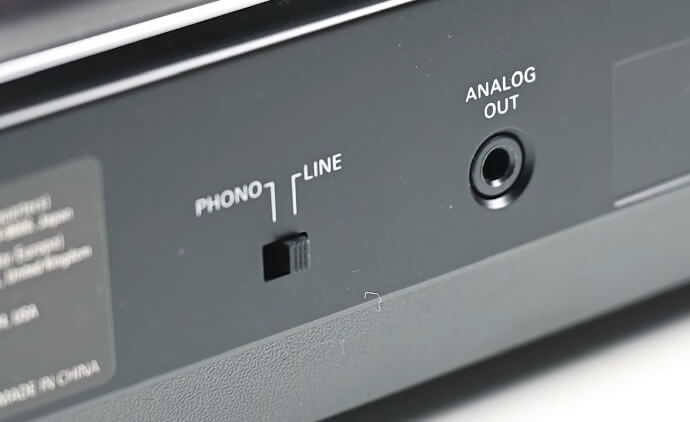
This step will enable your turntable’s in-built preamp and your turntable phono signals are amplified and the RIAA equalization curve is applied to it. Now, the turntable output will be at line level.
3) Take the output of the turntable through RCA cables or 3.5mm auxiliary to RCA cable depending on your turntable output terminal.
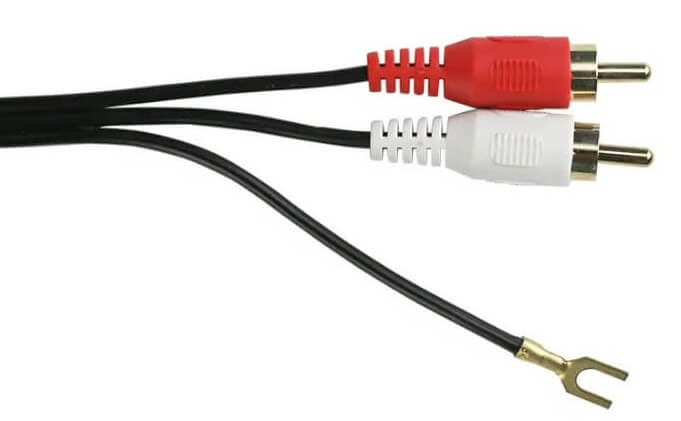
4) Connect the second end of the RCA cables to your active speakers.
That’s it.
Setup 2: Turntable -> External Phono Preamp -> Active or Powered Speakers
Here is the step-by-step guide to complete this setup:
1) Use RCA cables or 3.5mm auxiliary to RCA cable depending on your turntable output terminal.

2) Take the output from the turntable
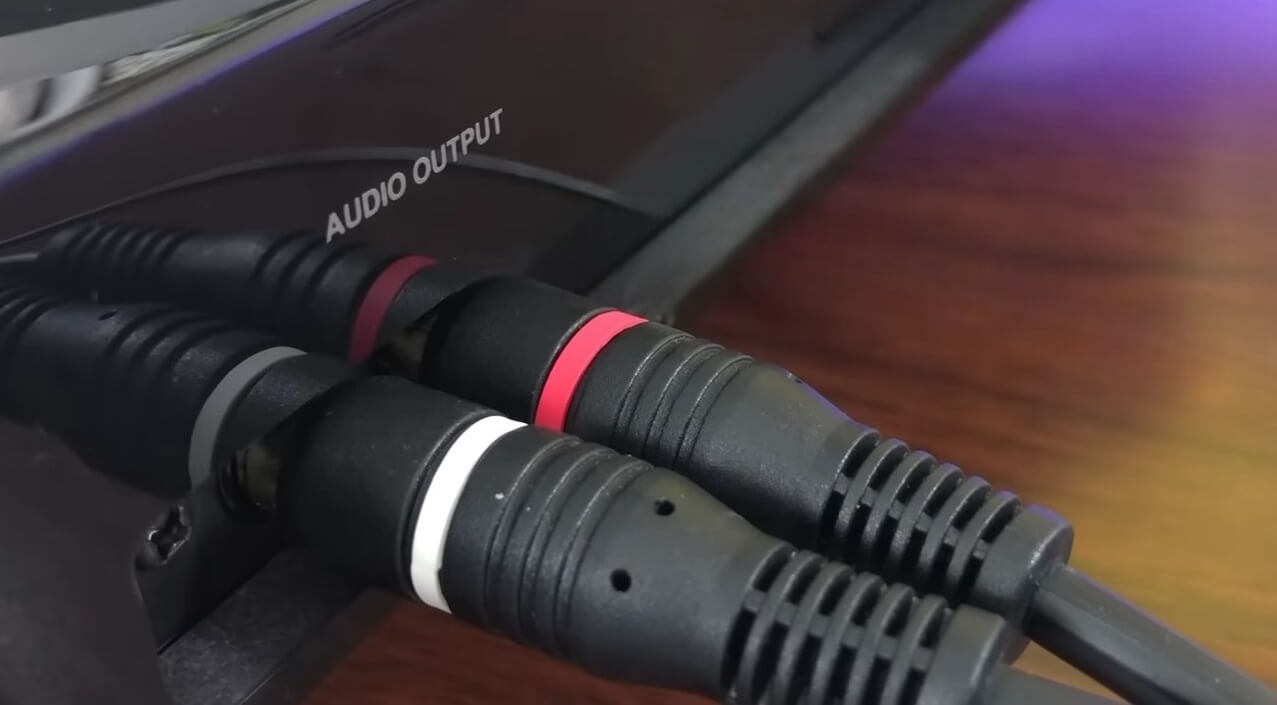
3) Connect the RCA cables from the turntable to the input of the external phono preamp by simply matching the red one with the red terminal and the white one with the white terminal.
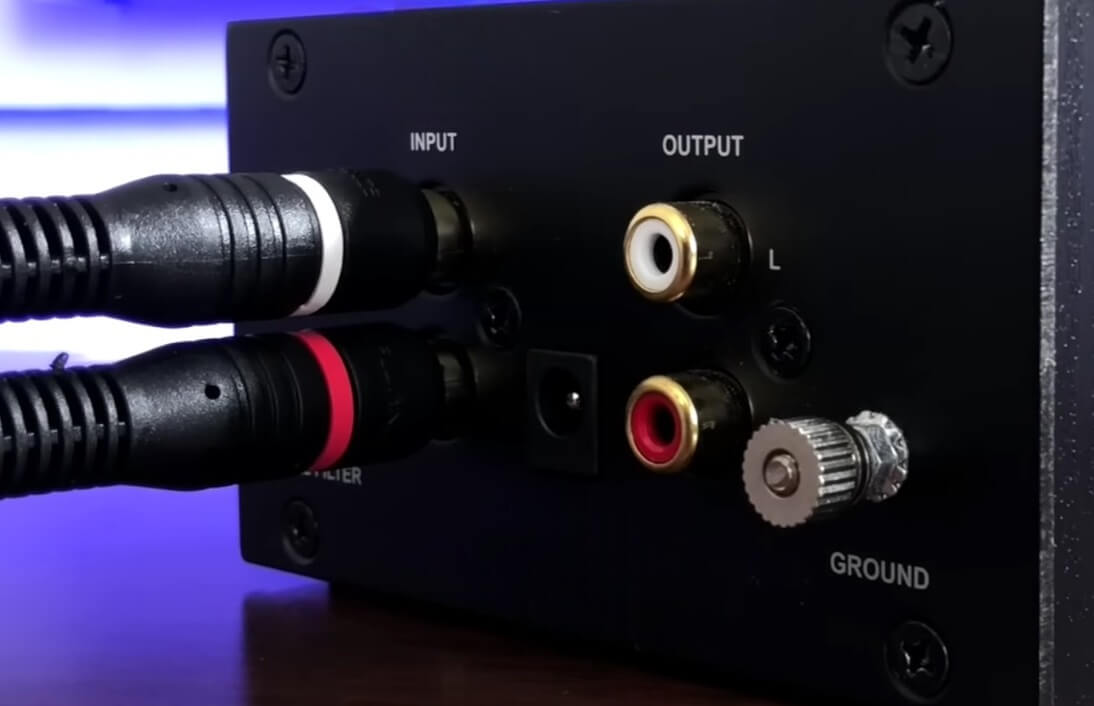
4) Use another RCA cable and connect it to the output of the phono preamp
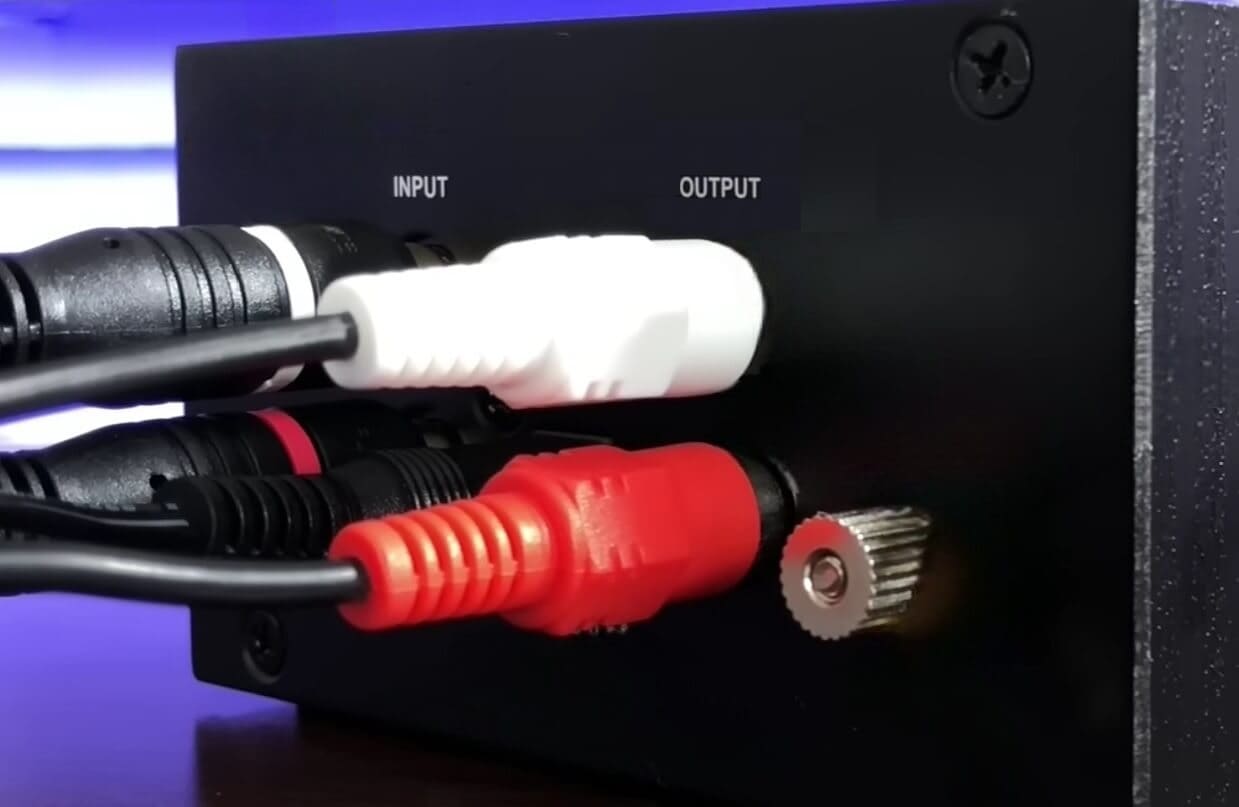
5) Connect the RCA cable (output from phono preamp) to your active speakers.
That’s it.
Frequently Asked Questions:
Q1- Can I connect my turntable directly to the speakers?
Yes, you can connect your turntable directly to the speakers but there are two conditions.
- The turntable must have an in-built phono preamp
- The speakers must be active or powered
To connect properly, you first need to enable your in-built phono preamp by switching the “PHONO/LINE” switch to the line, and after that, you can take the output from the turntable using RCA cables and connect the other end to the speakers.
That’s it. You are ready to rock.
Q2- Do you need a receiver for a Bluetooth turntable?
No, you don’t need a receiver while using Bluetooth in your turntable. Well, if you are using Bluetooth on your turntable then you need active speakers with Bluetooth and these speakers already have an in-built amplifier. So, you don’t need any receiver in the turntable setup.
Q3- Can I connect a turntable directly to an amplifier?
Yes, you can connect your turntable directly to the amplifier but your setup must satisfy any one scenario listed below:
Scenario 1: The turntable has an in-built phono preamp while the receiver doesn’t have a phono input
You need to enable your turntable’s in-built phono preamp by switching the “PHONO/LINE” switch to the line and after that, you can connect the turntable’s output to the line level input of the receiver.
That’s it.
Scenario 2: The turntable doesn’t have an in-built phono preamp while the receiver has a phono input
Just, take the output from the turntable and connect it to the phono input of the receiver.
That’s it.
Scenario 3: Both devices have an in-built phono preamp
In this case, you need to enable the phono preamp of any one unit.
Using Turntable’s Phono Preamp:
If you are using the turntable’s phono preamp then you need to connect the output from the turntable to the line-level input of the receiver.
Using Receiver’s Phono Input:
If you are using the receiver’s phono input as a phono preamp then you need to make sure that your turntable’s phono preamp is disabled by switching the “PHONO/LINE” switch to the phono and after that, connect the output from the turntable to the phono input of the receiver.
Note: If you accidentally enabled the turntable’s phono preamp and transmitted the output to the phono input of the receiver then your phono signals will get amplified twice and you will hear weird or distorted sound coming from your speakers.
I hope you understand whether you need a receiver or not in your turntable setup. If you have any kind of questions then comment below. We will get back to you as soon as possible.


